New York Rangers: The ten worst trades in franchise history

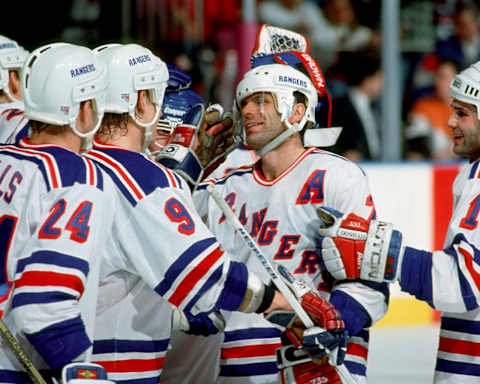
Every team makes bad trades, and the New York Rangers have made their fair share. Here is a list of the ten worst deals ever made by the Rangers.
The New York Rangers have had a long history. They’ve had their share of victory and they’ve had more than their share of defeat. The same is true in the history of the team’s trades over the course of their franchise.
Today, let’s take a look at the 10 worst trades the New York Rangers have ever made. This might bring back some awful, awful memories for long-time fans.
There is one caveat to this list, though; no matter how one-sided a trade might seem, if it resulted in the team winning the Stanley Cup, it won’t be on the list. For instance, if the team had not won in 1994, the trades of Tony Amonte, Todd Marchant, Mike Gartner, James Patrick and Darren Turcotte could warrant inclusion among the 10 worst deals. Deadline deals like the trade for Eric Staal and Martin St. Louis didn’t make the cut either.
Some of these trades are ancient history, but they all deserve a place on the top 10 list. Here we go!
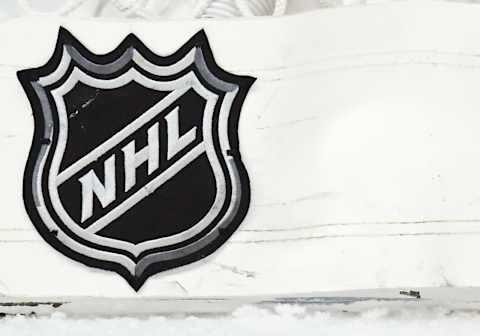
#10- Goalie John Ross Roach traded to Detroit for cash.
October 25, 1932
John Ross Roach had won a Stanley Cup in 1922 for the Toronto St. Patricks. The Rangers acquired him before the 1928-29 season in exchange for their own Cup winning goalie, Lorne Chabot.
Roach would be the number one Rangers goalie for four years (1928-32). To this day, he still holds the team’s records for shutouts (13) and goals against average (1.41) in a single season.
The Rangers soured on him during the 1932 Stanley Cup Final after he allowed six goals in each of the three games (it was a best of five at the time). Lester Patrick dispatched him to the Detroit Red Wings for $11,000.
Roach didn’t last long in Detroit, playing only three more seasons, but in his first season he posted a career high 25 wins, was a first team All-Star and finished third in voting for the Hart Trophy.
Without Roach, the Rangers still went on to win the 1933 Stanley Cup with Andy Aitkenhead in goal. This deal makes the list because of the success Roach had after leaving and because the Rangers got nothing in return except cash. .
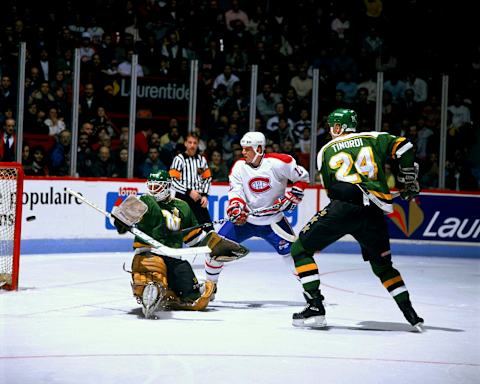
# 9- Mark Tinordi, Paul Jerrard, Bret Barnett, Mike Sullivan & a 3rd round pick to the Minnesota North Stars for Brian Lawton, Igor Liba and Eric Bennett.
October 11, 1988
As Rangers general manager, it seemed like Phil Esposito made a trade every day.
In less than three years, Espo made 43 trades, three of which made this list, oddly enough. Needless to say, he was a much better player than general manager.
The first of those three brutal deals was a multi-player deal with the then-Minnesota North Stars. The Rangers got former #1 overall draft pick Brian Lawton, Czech forward Igor Liba and the rights to prospect Eric Bennett.
Liba played one season in New York and scored five goals. Lawton played half a season in New York before being flipped to Hartford in another Esposito deal.
Jerrard and Barnett never amounted to much, but Mike Sullivan went on to play 12 seasons in the NHL before becoming a coach. The one that got away was Mark Tinordi. He was a big defenseman (6’4″, 213 lbs) who played 11 seasons as a stay-at-home, physical defenseman for Minnesota, Washington and Dallas.
In other words, precisely the kind of defenseman that the Rangers have always needed.

# 8- Dave Gagner and Jay Caufield to the Minnesota North Stars for Jari Gronstrand and Paul Boutilier.
October 8, 1987
This is the second Phil Esposito trade to make this list, if you are counting at home.
Dave Gagner, father of current NHL center Sam Gagner, was a diminutive forward who put up big numbers for Brantford of the OHL including 55 goals in 70 games in 1982-83. He was so well regarded, the Rangers made him their number one draft pick (12th overall) in 1983.
Gagner played parts of three seasons in New York with little success. Running out of patience, Phil Esposito traded him to the North Stars along with enforcer Jay Caufield for Finnish defenseman Jari Gronstrand and ex-Islander Paul Boutiilier.
Gronstrand and Boutilier played 66 games for the Rangers before being traded away. Caufield played six more NHL seasons, but it was Gagner that the Rangers were going to regret giving away.
Gagner went on to play 529 games for five teams (mostly with Minnesota/Dallas) scoring 307 goals and 692 total points after leaving New York. He had six straight seasons with 31 or more goals, topping 40 goals twice.
Dave Gagner is the classic case of giving up on a high draft pick too soon. It didn’t help that Gagner was a Craig Patrick draft pick, so Esposito had no loyalty to him.
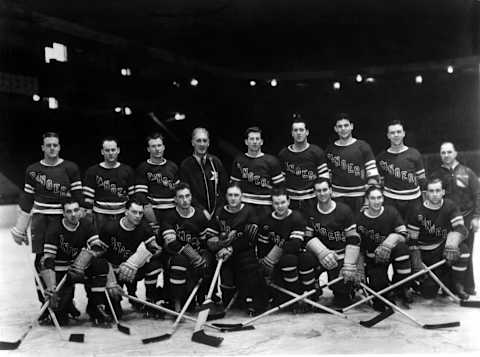
# 7- Babe Pratt traded to the Toronto Maple Leafs for Hank Goldup and Red Garrett.
November 27, 1942
Defenseman Babe Pratt was one of the cornerstones of the 1940 Stanley Cup Champion New York Rangers team. Pratt had a reputation as a hard drinker and his bad habits wore on Rangers general manager Lester Patrick. Patrick eventually dealt him to the Maple Leafs for forward Hank Goldup and defenseman Red Garrett.
Garrett would only play 23 games for the Rangers while Goldup had two productive seasons in New York. Pratt, however, would go on to have great success.
Pratt’s Leafs won the Stanley Cup in 1945. He made the All-Star team twice and won the Hart Trophy in 1944.
Pratt was a high-scoring defenseman who had goal totals of 12, 17 and 18 goals with the Leafs. Pratt played five more seasons in the NHL after leaving New York and he remains the only player traded by the Rangers who went on to win the Hart Trophy.
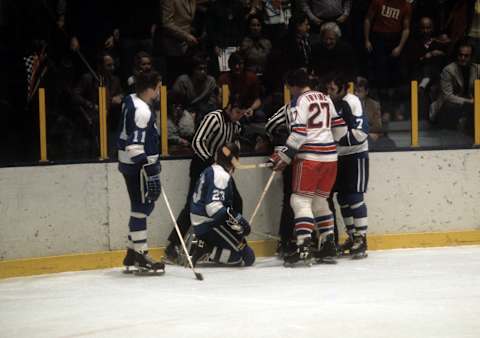
#6- Eddie Shack traded to the Toronto Maple Leafs for Pat Hannigan and Johnny Wilson.
November 7, 1960
Eddie Shack has the distinction of being traded by the Rangers TWICE within a year.
In February, 1960, he was dealt to Detroit, but the Detroit players (Red Kelly and Billy McNeill) refused to report so the trade was nullified. Just a few months later, the team was able to trade him to Toronto.
Both players acquired from Toronto, Pat Hannigan and Johnny Wilson, had two relatively undistinguished seasons in New York.
Meanwhile, Shack went on to play 15 more seasons in the NHL, winning four Stanley Cups with the Maple Leafs. He became a national hero in Canada when he scored the Cup-winning goal for the Leafs in ’63. He always admitted the deflected goal was an accident and that it actually went in off his backside.
He finished with 239 goals in his career and is one of two NHL players who scored 20 or more goals with five different teams (former Devil Bill Guerin is the other).
Although limited in ability, Shack became a spokesman for several Canadian companies and is one of the more famous names in NHL history. .

#5- Luc Robitaille traded to the Los Angeles Kings for Kevin Stevens.
August 28 ,1997
Luc Robitaille was one of the most prolific left wingers in NHL history. He became a Ranger in 1995 along with Ulf Samuelsson in a blockbuster trade with Pittsburgh that saw Petr Nedved and Sergei Zubov join the Penguins. In Robitaille, the Rangers got a player who averaged 42 goals in his first nine seasons.
In his two seasons in New York, “Lucky Luc” under-performed, scoring 23 and 24 goals. After losing to the Flyers in the 1997 Conference Finals, Rangers general manager Neil Smith decided to send Robitaille back to Los Angeles in a trade of underachieving left wings.
In exchange the Rangers got hulking left winger Kevin Stevens who had seen his career slide after back-to-back 50 goal seasons with the Pittsburgh Penguins, where he was playing alongside Mario Lemieux.
How did it work out for the Rangers? Not so well.
Stevens played two seasons in New York before being arrested in a St. Louis motel with a prostitute and crack cocaine. He entered the NHLPA substance abuse program and never played another game for the Blueshirts.
As for Luc Robitaille, he revived his career with his return to Los Angeles, playing eight more years and scoring over 30 goals in four of those years. Robitaille was elected to the Hockey Hall of Fame in 2009.
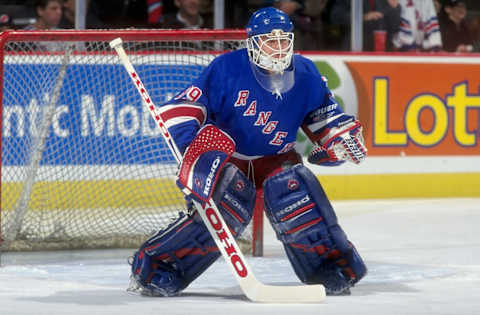
#4- Dan Cloutier, Niklas Sundstrom, 2000 First Round Draft Pick, 2000 Third Round Draft Pick to Tampa for a 1999 First Round Draft Pick (4th overall)
June 26, 1999
This trade was a bad one for the Rangers, not so much for what they gave up, but for how little they got in return. Neil Smith traded a king’s ransom in order to get the fourth overall draft pick in 1999. With that pick the Rangers selected Pavel Brendl, believing that they had acquired a generational offensive talent.
Dan Cloutier and Niklas Sundstrom weren’t stars, but were successful NHLers. Cloutier played parts of nine seasons in the NHL and was the number one goalie for Vancouver for three years. Right winger Sundstrom was a former first round pick (8th overall) who had already had seasons of 24 and 19 goals as a Ranger.
Tampa immediately swapped Sundstrom to San Jose where he played three and a half seasons before being traded to Montreal. All in all, after leaving New York, he played six seasons gaining a solid reputation as a defensive specialist.
While the two draft picks the Rangers gave away didn’t pan out as NHL players, if the team had kept those selections, they would have had a crack at Brooks Orpik, Justin Williams, Ron Hainsey, Paul Martin or Antoine Vermette, all drafted in 2000.
As for Pavel Brendl, he lives on as one of the biggest draft busts ever for the Rangers. He never played a game in New York and was later part of the trade to acquire Eric Lindros from the Flyers. The highest Rangers draft pick in the post-expansion era had an NHL career that consisted of 78 games in which he scored just 11 goals.
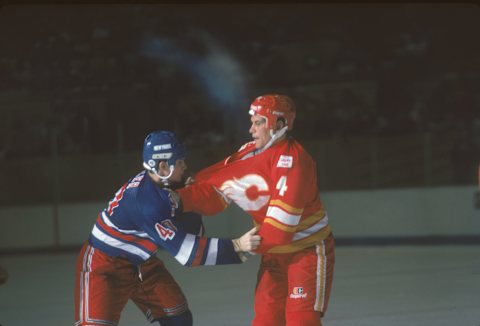
#3- Mike Ridley ,Kelly Miller and Bob Crawford traded to the Washington Capitals for Bobby Carpenter and a 1989 Second Round Draft Pick
January 1, 1987
This is the third Phil Esposito-engineered trade that makes this list and it was a doozy. On New Years Day, 1987 he made a blockbuster trade with the Capitals, acquiring Bobby Carpenter in exchange for two young forwards.
An outstanding center, Bobby Carpenter was the first U.S. born hockey player to score 50 goals in a season and was a legitimate star. Unfortunately, when he donned the Rangers jersey he apparently lost his scoring touch with only two goals in 28 games.
To make matters worse, Esposito then traded Carpenter to the Kings for 35-year-old Marcel Dionne. Espo thought that the sensitive Carpenter couldn’t handle the pressure of playing in New York and he jumped at the chance to acquire future Hall of Famer Dionne.
Dionne was a genuine superstar who had scored 50 goals in a season six times. In his first season as a Ranger he did notch 31 goals, but faded after that and retired within two years.
After escaping the bright lights of Broadway, Carpenter played 12 more seasons in the NHL, mostly in the role of defensive specialist. He did score 25 goals in a season twice as a Boston Bruin and won a Stanley Cup with the New Jersey Devils in 1995.
Left winger Kelly Miller had been a ninth round pick by the Rangers who had shown a knack for scoring in his first two seasons. He played almost 13 more seasons as a Capital, mostly as a defensive specialist.
Center Mike Ridley had been a find for the Rangers, signed as an undrafted free agent out of the University of Manitoba. He scored 22 goals as a rookie and had 16 goals in 38 games when he was traded to Washington. He average 29 goals over the next seven and a half years as a Capital before finishing his career in Toronto and Vancouver.
So, the Rangers gave up Kelly Miller and Mike Ridley, two solid NHL forwards, for 28 games of Bobby Carpenter and two seasons of an aging Marcel Dionne. The trade for Carpenter alone would make the top 10 list, but include the panicked deal for Dionne and it makes it into the top three.
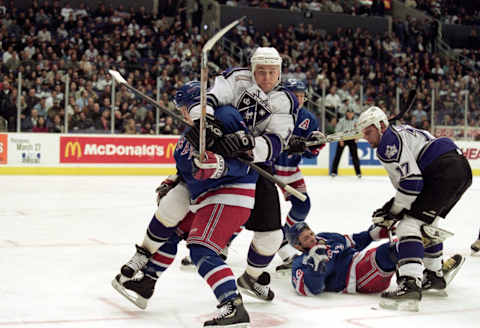
#2- Mattias Norstrom, Ray Ferraro, Ian Laperriere, Nathan Lafayette and 1997 4th round draft pick traded to the Los Angeles Kings for Jari Kurri, Marty McSorley and Shane Churla
March 14, 1996
The trade that ranks second worst in New York Rangers’ history was made in an attempt to rekindle the glory days of the Edmonton Oilers.
To bolster the team for the playoffs and to compliment Mark Messier, the Rangers dealt for two former Oilers in Jari Kurri and Marty McSorley. While the strategy worked in 1994, in 1996 it was an absolute failure.
Jari Kurri was one of the greatest goal scorers in NHL history, notching 474 goals as Wayne Gretzky’s right winger. Kurri played all of 14 regular season games with New York though he did play well in the 1996 playoffs. His Rangers career ended when he signed with Anaheim after the season.
Marty McSorley was known more as Gretzky’s defender than for his hockey skills. He played nine regular season games for the Rangers before being traded to San Jose. Shane Churla ended up being the most productive player received in the trade, actually playing 45 games for the Rangers the following season, scoring one goal. In this trade the Rangers got 78 regular season games, one goal and seven assists.
For that meager productivity, the Rangers gave up an awful lot. Defenseman Mattias Norstrom had been a second round draft pick in 1992 and oozed potential. He lived up to it as he played the next 11 seasons as a defensive stalwart for the Kings before finishing his career in Dallas.
Right winger Ian Laperriere had been acquired from St. Louis earlier that season and he went on to play 13 more seasons in the NHL, eight with the Kings. Known as an agitator, his feisty style made him a fan favorite.
Nathan Lafayette had a less than memorable NHL career, but did play parts of three seasons in Los Angeles.
Perhaps the most painful part of this deal was the inclusion of Ray Ferraro. Ferraro was a veteran center who had signed with the Rangers as a free agent after five years as an Islander. He wanted to play for the Rangers and had signed a three year deal. He was reportedly devastated by the trade, but he did report to Los Angeles and played three seasons there before finishing his career in Atlanta and St. Louis.
If Mattias Norstrom had been the only player traded to Los Angeles, the deal would still make the top ten list. Throw in Laperriere and Ferraro and it is one of the worst ever.
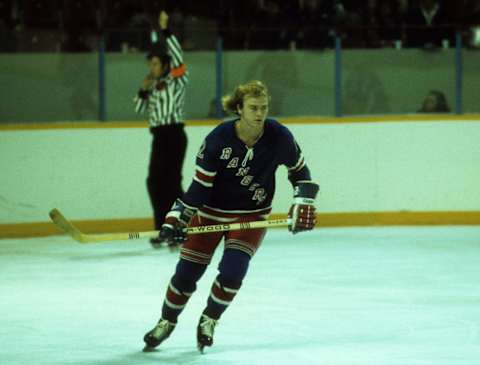
#1-Rick Middleton traded to the Boston Bruins for Ken Hodge.
May 26, 1976
Rangers general manager Emile Francis had pulled off one of the biggest trades in hockey history when he swapped Jean Ratelle, Brad Park and Joe Zanussi for Phil Esposito and Carol Vadnais in the first month of the 1975-76 season. Esposito had averaged almost a goal a game in eight years in Boston, but with 29 goals in 62 games, the Rangers had seen his productivity fall by half. How were they to fix this problem? The answer seemed like an easy one.
Ken Hodge had established himself as Esposito’s right wing. For eight seasons he was on the highest scoring line in hockey and had seasons with 62 and 55 goals. Even without Espo as his center, Hodge still scored 25 goals in 1975-76. Reuniting Hodge with Esposito was a natural solution and Emile Francis picked up the phone and made the deal.
Rick Middleton had played two seasons with the Rangers. As a rookie, he scored 22 goals in only 47 games. In his sophomore season he slacked off a bit, scoring 24 goals in 77 games. It would take Middleton to pry Hodge loose from the Bruins and Francis was ready to make the trade.
How did it work out? Describing this trade as a disaster would be an understatement.
Hodge played one season and 18 games in a second season as a Blueshirt. His one full season was fine as he scored 21 goals and had 62 points in 78 games and he finished his Rangers career with 23 goals and 68 points in 96 games. What he didn’t do was return Esposito to the goal scoring heights he had achieved in Boston. After seasons of 76, 66, 55, 68 and 61 goals, Esposito scored only 34 goals in his one full season with Hodge.
Meanwhile, Rick Middleton played 12 full seasons for the Bruins and scored 402 goals. He averaged over a point a game, finishing with 898 points in 881 games. He topped the 40-goal mark five times with a high of 51 goals in 1981-82. He added 100 points in 111 playoff games for Boston. A second team all-star in 1982, he won the Lady Byng Trophy in 1982 as well.
It’s ironic that Phil Esposito made three of the worst trades in Ranger history and was a prime player in the worst deal ever.
Next. Five players that you completely forgot were Rangers. dark